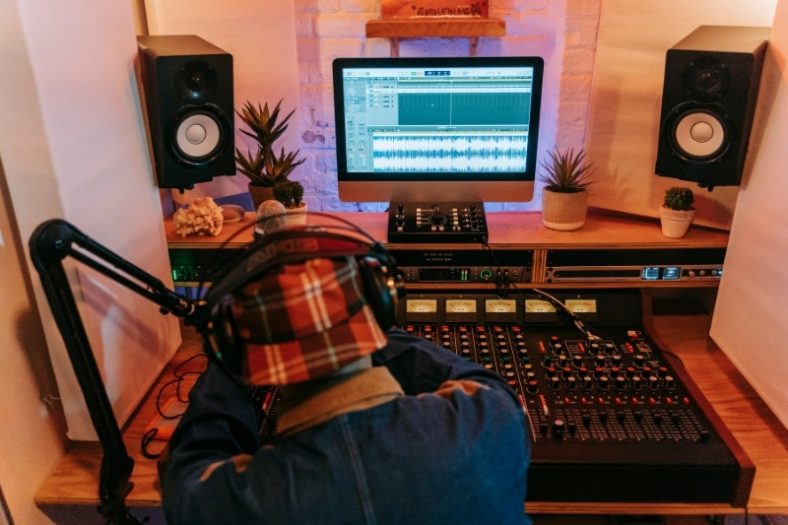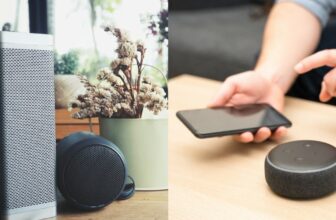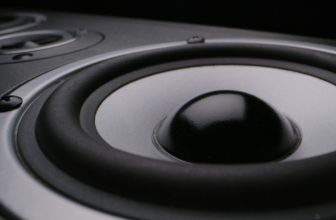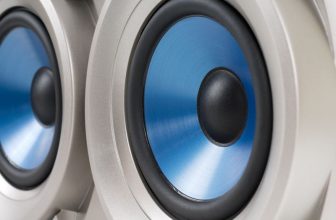Do You Need an Audio Interface for Studio Monitors?

You don’t necessarily need to have an audio interface to use your studio monitors because a simple 1/8″ headphone output to L and R 1/4″ splitter cable can do the trick. However, this can hurt sound quality. Ideally, you should connect your computer to your studio monitors via an audio interface.
Studio monitors, unlike normal stereo speakers, keep all the frequencies flat. This means that the audio coming out of your studio monitors is not enhanced. For this reason, audio professionals rely on studio monitors to get more accurate results when composing, mixing, and mastering.
A good set of studio monitors should be a part of every musician’s arsenal. But do you need to buy an audio interface to make the most of your studio monitors?
Technically, yes. To get a high-quality, pure sound out of your monitors, you should count on a reliable audio interface. However, it’s possible to use studio monitors without buying one.
Contents
Can you use studio monitors without an audio interface?
Most certainly. All you need is a 1/8″ headphone output to L and R 1/4″ splitter cable and, if possible, a good internal sound card. You’ll lose on the sound-quality department, but you can still get good-enough results to work on professional music projects.
Finding the right cable should be easy enough. Depending on your budget, you can go for an affordable option like the Hosa CMP-159 or invest in a higher-quality cable like the Pro Co IPMB2Q-5. Either way, you should be able to get a good 1/8″ headphone output to L and R 1/4″ splitter cable for less than $50.
Connecting the cable to your computer is equally easy. Just insert the 1/8″ end (also known as minijack) into your computer’s headphone input and the two 1/4″ splitter ends (also known as jacks) into the input of the studio monitors.
Keep in mind that the red jack should go to the right speaker and the white jack should go to the left speaker. Small tip: If you’re feeling confused, remember that Red starts with R, which is also the first letter in the word Right.
Can you use your computer’s internal sound card with studio monitors?
Unless you have an audio interface, you have to! Fortunately, most modern computers are equipped with relatively decent internal sound cards. If you’re working on an old machine with a terrible sound card, you can always get asio4all.
ASIO4ALL is free universal audio software for Windows that works wonderfully with studio monitors and provides a versatile set of buffer options, which are ideal for balancing recording latency and CPU usage while working inside a DAW.
ASIO4ALL is a relatively outdated software but it’s still used by thousands of music producers. Think of it as a last-resort solution: if your computer’s internal sound card is giving you problems, you can always rely on ASIO4ALL as a decent, free, and ready-to-install alternative.
Why should you connect your studio monitors to an audio interface?
There are easier, more affordable ways of connecting your computer to your studio monitors. So, why do you need an audio interface?
Audio interfaces are great for studio monitors because they provide optimized sound quality, low latency, multiple recording possibilities, and more control over volume and monitoring.
If you’re working professionally with audio, studio monitors and audio interfaces are arguably the two most important pieces of hardware you can get. If you have good studio monitors plugged directly into your computer, you’ll be missing out on a lot. The same applies if you have a nice audio interface plugged into a set of frequency-enhanced or poor-quality speakers.
Getting an audio interface after buying studio monitors makes for an additional cost. Fortunately, there are plenty of high-quality audio interfaces out there that cost less than $300.
The advantages of working with an audio interface
These are some of the main reasons why it pays off to use your studio monitors with an audio interface.
Better sound quality
The best audio interfaces are developed by trustworthy companies that work for years to ensure their products have great sound quality. Most importantly, audio interfaces are specifically designed to fit the needs of professional musicians.
The same does not apply to the internal sound card of your computer. In many cases, these are meant to be used for other purposes, such as watching movies, merely listening to music, or playing video games.
Ideal for recording
Audio interfaces, unlike internal sound cards, are made for recording. This means that you have access to one or more mic/line inputs that are specifically prepared to convert analog audio into digital audio as effectively as possible.
With most audio interfaces, you also have access to a preamp and phantom power, which is a requirement of most condenser microphones. Without an audio interface, you can still record sounds into your computer, but barely. You either have to use a USB microphone, or worse, your computer microphone (which is often terrible).
Less latency
Audio interfaces are audio-optimized, meaning they can help to enhance the performance of your computer for all audio-related purposes. In other words, you’ll be dealing with less latency, you’ll be able to save on CPU usage, and you’ll have access to a wide array of buffer options and other software-based features.
Universal Audio’s Apollo Twin X, for example, even functions as an “extra CPU,” allowing for latency-free recording even if you’re working on a pretty heavy music project. It’s like having a second computer plugged into your regular computer, dealing exclusively with recording and other audio-related functions.
More control over volume
Another big pro of having an audio interface is the control over volume and other monitoring parameters. It’s way easier than controlling the volume on your computer’s sound options or, even worse, changing the gain of your studio monitors.
An audio interface is a piece of hardware that sits right next to you on the desk. You can easily balance the volume of your speakers and headphones simply by twisting a knob, which makes it a lot easier to get the sound that you want out of your studio monitors.
Summary
It’s okay if you bought some nice studio monitors and don’t have an audio interface. You can make it work by using a splitter cable. And while the sound quality will not be ideal, you can still get excellent results while composing and even mixing/mastering without an audio interface.
However, don’t rely on your computer’s poor internal sound card forever. There are so many high-quality, low-cost audio interfaces on the market that it’s almost unforgivable to work as an audio professional without having one.








